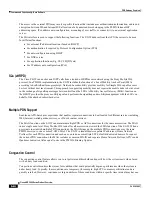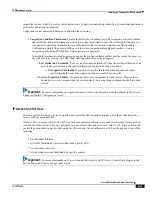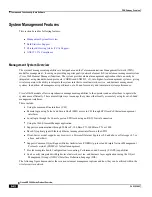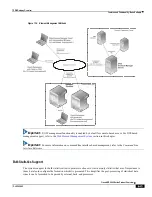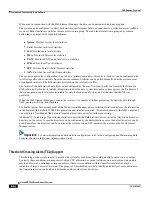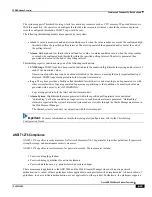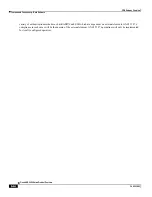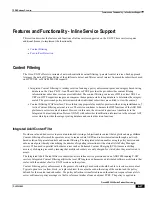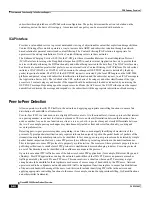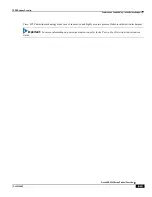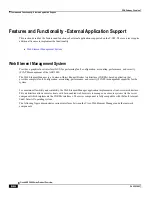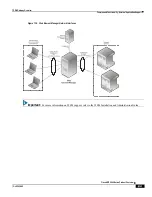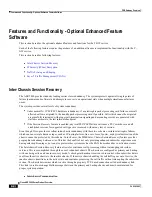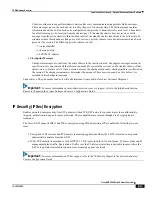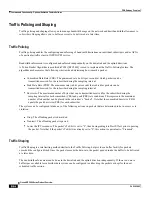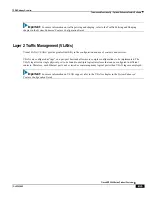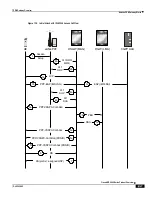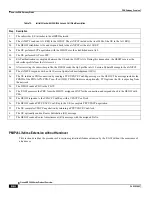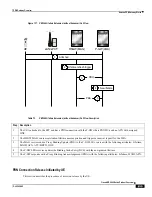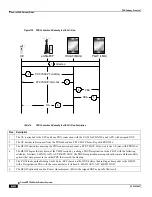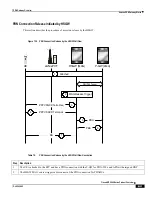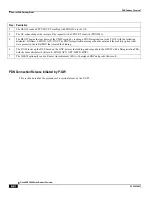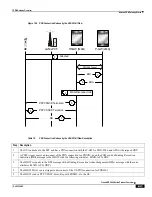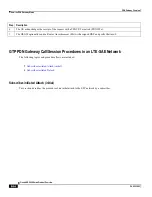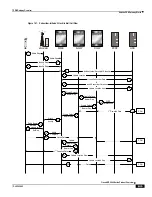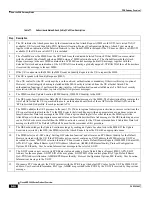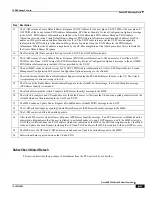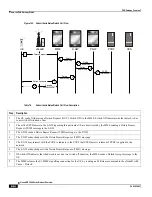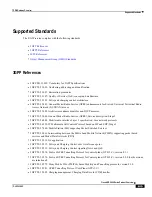
PDN Gateway Overview
▀ Features and Functionality - Optional Enhanced Feature Software
▄ Cisco ASR 5000 Series Product Overview
OL-22938-02
Traffic Policing and Shaping
Traffic policing and shaping allows you to manage bandwidth usage on the network and limit bandwidth allowances to
subscribers. Shaping allows you to buffer excesses to be delivered at a later time.
Traffic Policing
Traffic policing enables the configuring and enforcing of bandwidth limitations on individual subscribers and/or APNs
of a particular traffic class in 3GPP/3GPP2 service.
Bandwidth enforcement is configured and enforced independently on the downlink and the uplink directions.
A Token Bucket Algorithm (a modified trTCM) [RFC2698] is used to implement the Traffic-Policing feature. The
algorithm used measures the following criteria when determining how to mark a packet:
Committed Data Rate (CDR): The guaranteed rate (in bits per second) at which packets can be
transmitted/received for the subscriber during the sampling interval.
Peak Data Rate (PDR): The maximum rate (in bits per second) that subscriber packets can be
transmitted/received for the subscriber during the sampling interval.
Burst-size: The maximum number of bytes that can be transmitted/received for the subscriber during the
sampling interval for both committed (CBS) and peak (PBS) rate conditions. This represents the maximum
number of tokens that can be placed in the subscriber‘s ―bucket‖. Note that the committed burst size (CBS)
equals the peak burst size (PBS) for each subscriber.
The system can be configured to take any of the following actions on packets that are determined to be in excess or in
violation:
Drop: The offending packet is discarded.
Transmit: The offending packet is passed.
Lower the IP Precedence: The packet‘s ToS bit is set to ―0‖, thus downgrading it to Best Effort, prior to passing
the packet. Note that if the packet‘s ToS bit was already set to ―0‖, this action is equivalent to ―Transmit‖.
Traffic Shaping
Traffic Shaping is a rate limiting method similar to the Traffic Policing, but provides a buffer facility for packets
exceeded the configured limit. Once the packet exceeds the data-rate, the packet queued inside the buffer to be delivered
at a later time.
The bandwidth enforcement can be done in the downlink and the uplink direction independently. If there is no more
buffer space available for subscriber data system can be configured to either drop the packets or kept for the next
scheduled traffic session.
Содержание ASR 5000 Series
Страница 1: ......
Страница 26: ......
Страница 48: ...New In Release 10 0 SCM Features Cisco ASR 5000 Series Product Overview OL 22938 02 ...
Страница 50: ......
Страница 58: ......
Страница 67: ...Product Service and Feature Licenses Default Licenses Cisco ASR 5000 Series Product Overview OL 22938 02 ...
Страница 68: ......
Страница 126: ......
Страница 138: ......
Страница 146: ......
Страница 218: ......
Страница 236: ......
Страница 356: ......
Страница 374: ......
Страница 422: ......
Страница 496: ......
Страница 572: ......
Страница 654: ......
Страница 700: ......
Страница 726: ......
Страница 784: ......
Страница 816: ......
Страница 839: ...Network Address Translation Overview How NAT Works Cisco ASR 5000 Series Product Overview OL 22938 02 ...
Страница 841: ...Network Address Translation Overview How NAT Works Cisco ASR 5000 Series Product Overview OL 22938 02 ...
Страница 844: ......
Страница 906: ......
Страница 926: ......
Страница 942: ......
Страница 943: ...Cisco ASR 5000 Series Product Overview OL 22938 02 Chapter 30 Technical Specifications ...
Страница 966: ......
Страница 967: ...Cisco ASR 5000 Series Product Overview OL 22938 02 Chapter 31 Safety Electrical and Environmental Certifications ...
Страница 972: ......

